Most people think getting New Zealand residency means years of temporary visas and crossed fingers. Here’s what changed: if you’re in the right profession, you can land as a resident from day one in 2026. No temporary work visa. No waiting around wondering if you’ll make the cut.
Countless skilled workers burn years on temporary visas, never knowing if permanent residency would actually happen. This new pathway flips that script entirely.
Why New Zealand Opened This Door
The country has a problem. Critical worker shortages are strangling their economy, and the old system wasn’t working. It required skilled professionals to jump through temporary visa hoops, this created unnecessary barriers. The Green List was introduced to cut through that mess.
Marcus Johnson from the New Zealand Institute of Economic Research puts it bluntly, “We’ve recognized that requiring skilled professionals to go through temporary work visas first creates unnecessary barriers and uncertainty, the Green List represents a fundamental shift toward attracting and retaining the talent we desperately need.”
New Zealand’s population is aging fast. Post-pandemic labor gaps haven’t healed. They need doctors, engineers, and teachers right now, not in three years after someone proves themselves on a temporary visa.
What’s brilliant about this approach? It eliminates the biggest fear skilled immigrants face. You’re not investing years in a country that might reject you later. When you land under this program, you’re already a resident. Your spouse can work anywhere immediately. Your kids pay local school fees from day one.
The Green List Breakdown
The Green List isn’t wishful thinking. It’s New Zealand’s official shopping list of roles they need filled yesterday. Tier 1 occupations get you straight to residency. Tier 2 roles require 24 months of work first.
But here’s the catch everyone misses: job titles don’t automatically qualify you. Take registered nurses. You need current registration with New Zealand’s Nursing Council plus a job offer meeting their salary requirements. Software engineers need specific qualifications in technology areas they’ve marked as critical.
Immigration officers will dissect your role description, salary, and qualifications against their exact criteria. I’ve seen qualified people rejected because they assumed their generic job title was enough. The devil lives in those detailed occupation descriptions.
The Accredited Employer Puzzle
Not every New Zealand employer can sponsor Green List workers. Only accredited ones qualify, and that list is shorter than you’d expect. This protects you as much as it complicates things.
Sarah Chen, who wrote the book on New Zealand work visas, explains it well: accreditation means the employer understands their obligations and has systems supporting international workers. You’re getting a real job offer, not just any offer.
Check an employer’s accreditation status on Immigration New Zealand’s website before applying anywhere. Don’t waste time with non-accredited employers if residency is your goal. They literally cannot sponsor your application, no matter how perfect the role looks.
Your Game Plan
Match your background against the specific Tier 1 requirements for your occupation first. Don’t skim the job title and assume you qualify. Download those detailed descriptions and compare them line by line with your experience. Spot the gaps now, not after applying.
Research accredited employers next. Use the official database, but also scan company websites and LinkedIn. Many accredited employers advertise their Green List sponsorship ability because it helps them attract international talent.
When you apply for jobs, lead with your Green List eligibility in your cover letter. Employers get this pathway now. Many prefer candidates who can go straight to residency over dealing with temporary visa complications. Make it their advantage, not just yours.
Your job offer letter needs to specifically mention Green List requirements. Include salary details, job duties, and any professional registration needs. This documentation becomes critical for your residency application.
Bringing Your Family Along
Your spouse and kids can join your resident visa application from the start. Your partner gets an open work visa, meaning any employer, any field. Your children attend school as locals, paying domestic fees instead of international rates.
This isn’t a separate application or afterthought. Family inclusion is built into the Straight to Residence process. When you win, your whole family wins simultaneously.
The Tier 2 Alternative
If your occupation lands in Tier 2, you’re not stuck. The Work to Residence pathway gets you residency after 24 months of New Zealand work. You’ll need a temporary work visa initially, but you get a clear timeline and defined requirements for permanent residency.
Some professionals use Tier 2 as a springboard, gaining local experience that eventually qualifies them for Tier 1 roles. Those 24 months also give you time to complete additional qualifications or professional registrations.
Where Applications Die
The biggest killer? Assuming your overseas qualifications automatically work in New Zealand. Many professions require registration with local professional bodies before you can work. Start this process early because it takes months.
Another common mistake is chasing non-accredited employers or trying to convince them to get accredited for you. Employer accreditation is a major undertaking most companies won’t do for one hire. Focus on employers already in the system.
Salary requirements will sink you too. Green List roles specify minimum pay levels, and these aren’t negotiable. If an employer offers below the threshold, your application fails regardless of other qualifications.
What Actually Happens When You Win
Your Straight to Residence visa gives you resident status, not permanent residence immediately. You can live and work in New Zealand indefinitely, but you’ll need to meet residence requirements before applying for a Permanent Resident Visa later.
Most people find these requirements straightforward since they’re already living and working there. Your resident visa also creates a pathway to New Zealand citizenship after meeting residency requirements and showing integration into the country.
Planning Your 2026 Move
This pathway offers the clearest route to New Zealand residency available to skilled workers today. Unlike temporary visas that leave you guessing about long-term prospects, this program provides certainty from arrival.
Start preparing now by researching your occupation’s specific requirements and identifying accredited employers in your field. Employers who understand this pathway are already planning 2026 hiring, and early preparation gives you a real advantage.
Immigration rules change, but the Green List represents New Zealand’s medium-term strategy for addressing skill shortages. They’ve invested heavily in this system, and early results suggest it’s working.
Your next move is straightforward: visit Immigration New Zealand’s official website, verify your occupation’s Green List status, and start connecting with accredited employers. The pathway exists, the requirements are public, and the opportunity is genuine.
New Zealand already answered whether they need skilled workers like you by creating the Green List. The only question left is whether you’re ready to take the most direct route to residency they’ve ever offered.
Discover more from MUZZLECAREERS
Subscribe to get the latest posts sent to your email.








